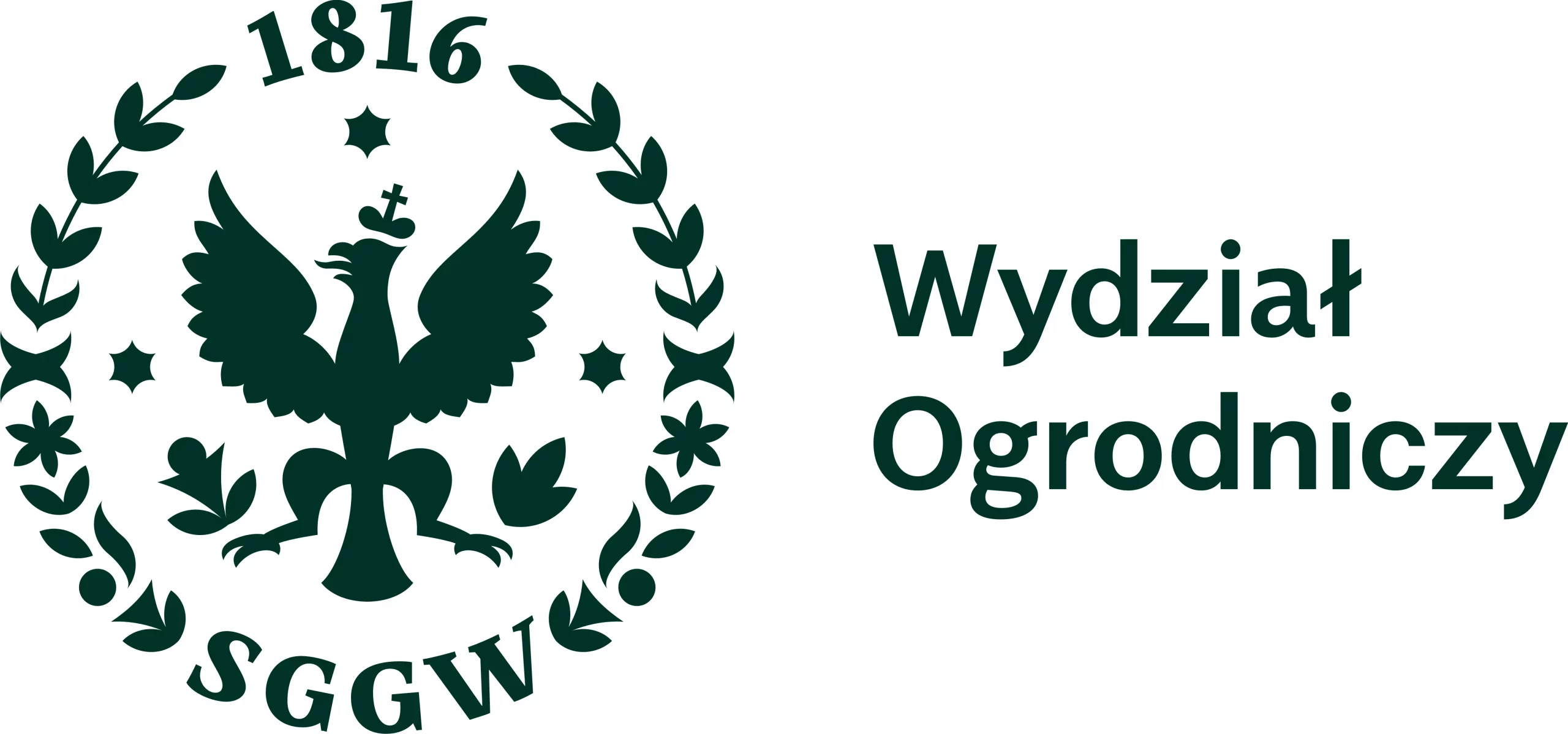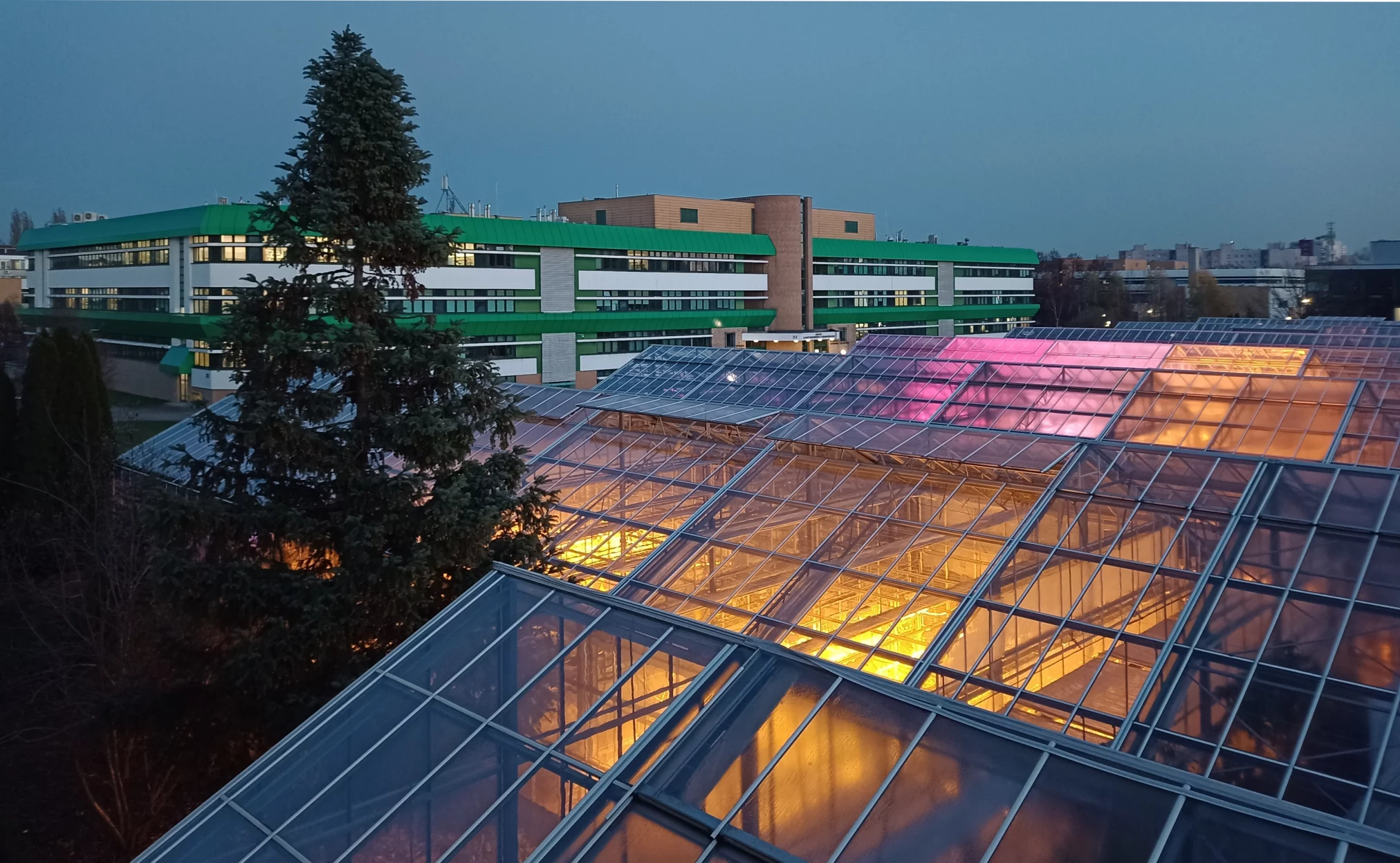The Authorities of the Faculty
Dean of the Faculty of Horticulture
DSc. Ewa Zaraś
phone: +48 22 59 320 04
e-mail: ewa_zaras@sggw.edu.pl
building 35, room 3
Tuesdays 10:00 – 12:00
Thursdays 10:00 – 12:00

Vice-Dean for Didactics
Ogrodnictwo, Sustainable horticulture, Ogrodnictwo miejskie i arborystyka
DSc. Julita Rabiza-Świder
phone: +48 22 59 320 08
e-mail: julita_rabiza_swider@sggw.edu.pl
building 35, room 4
Mondays 12:00-14:00
Thursdays 12:00-14:00
Fridays 12:00-14:00

Dean’s Office
Str. Nowoursynowska 159, 02-776 Warsaw, Poland
building 35, room 2
phone. +48 22 59 320 05, +48 22 59 320 10
e-mail: dwoa@sggw.edu.pl
Head of the Dean’s Office
Msc Piotr Stachura
phone. +48 22 59 320 10
e-mail: piotr_stachura@sggw.edu.pl
Rada Programowa Dyscypliny Rolnictwo i Ogrodnictwo
Rada Programowa Dyscypliny Rolnictwo i Ogrodnictwo dla kierunków studiów ogrodnictwo oraz ogrodnictwo miejskie i arborystyka na lata 2024-2028
dr hab. Ewa Zaraś –Przewodnicząca Rady Programowej
dr hab. Tomasz Krupa – V-ce Przewodniczący Rady programowej
dr hab. Beata Gawryszewska Instytut Inżynierii Środowiska
prof. dr hab. Elżbieta Paduch-Cichal
prof. dr hab. Janina Gajc-Wolska
dr hab. Katarzyna Bączek, prof. SGGW
dr hab. Agata Jędrzejuk, prof. SGGW
dr hab. Ewa Mirzwa-Mróz, prof. SGGW
dr hab. Katarzyna Kowalczyk, prof. SGGW
dr hab. Julita Rabiza-Świder, prof. SGGW
dr hab. Olga Kosakowska, prof. SGGW
dr hab. Beata Fornal-Pieniak, prof. SGGW
dr hab. Marzena Wińska-Krysiak
dr Jarosław Przybył
dr Mariola Wrochna
dr Ewa Szpadzik
Paulina Sztajerowska – Przedstawicielka Studentów
Daria Bielak – Przedstawiciel Studentów
Grzegorz Rybka – Przedstawiciel Studentów
mgr inż. Ewa Owsianik-Łuczak, arch. kraj. – Agencja Promocji Zieleni
mgr Piotr Stachura – Sekretarz
Koordynatorzy i zespoły robocze
Zespół ds. strategii i rozwoju Wydziału
prof. dr hab. Janina Gajc-Wolska – przewodnicząca
dr hab. Ewa Mirzwa-Mróz, prof. SGGW
dr hab. Ewa Zaraś
dr hab. Marzena Wińska-Krysiak
dr Anna GeszprychZespół ds. Dydaktyki
prof. dr hab. Elżbieta Paduch-Cichal – przewodnicząca
dr hab.Katarzyna Bączek, prof. SGGW
dr hab.. Andrzej Pacholczak, prof. SGGW
dr hab. Tomasz Krupa
dr Anna Geszprych
dr Dagmara Stangierska-Mazurkiewicz
dr Ewa Puchalska
dr Marta Stankiewicz-Kosyl
dr Sebastian Przybyłko
dr Tatiana SwoczynaZespół ds. Jakości Kształcenia
dr Ewa Szpadzik – przewodnicząca
dr hab. Ewa Skutnik, prof. SGGW
dr hab. Beata Fornal-Pieniak, prof. SGGW
dr Małgorzata MirgosZespół ds. Hospitacji
dr hab. Beata Fornal-Pieniak – przewodnicząca
dr hab. Andrzej Pacholczak, prof. SGGW
dr Marta Stankiewicz-Kosyl
dr Tatiana Swoczyna
dr Ewa Szpadzik
dr Ksenia Juszczak-Szelągowska
dr Ewelina Pióro-JabruckaKoordynator ds. Kontaktów Międzynarodowych
dr hab. Olga Kosakowska, prof SGGW
Koordynator ds. Upowszechniania Informacji o Wydziale
dr Jarosław L. Przybył – przewodniczący
dr hab. Agata Jędrzejuk, prof. SGGW
dr hab. Tomasz Krupa
dr hab. Robert PopekKoordynator ds. Praktyk
Koordynator ds. Osób z niepełnosprawnościami
Koordynator ds. Monitorowania losów absolwentów
dr hab. Ewa Mirzwa-Mróz, prof SGGW
Koordynator ds. Równego traktowania pracowników i studentów
dr Dagmara Stangierska-Mazurkiewicz
Koordynator ds. Współpracy z otoczeniem gospodarczym
dr hab. Katarzyna Kowlaczyk, prof SGGW
Koordynator ds. Otwartych Laboratoriów
Rada Interesariuszy
kierunek ogrodnictwo
dr Adam Słowiński – Prezes UPL Polska Sp. z o.o. (absolwent SGGW)
Maciej Majewski – właściciel i prezes Fresh Mazovia (absolwent SGGW)
Adam Piotrowski – przedstawiciel Argenta Seeds (absolwent SGGW)
Student council
Czym jest Samorząd Studencki Wydziału Ogrodniczego?
Samorząd tworzą wszystkie osoby studiujące na Wydziale Ogrodniczym. Jest nas więc dużo, ale pewnie nie wszystkie osoby są zainteresowane tego typu działalnością. Dlatego każdy rocznik wybiera, z początkiem października, starostę oraz dwóch członków Rady Roku. Taka trójka wchodzi nastepnie w skład Rady Wydziałowej Samorządu Studentów (RWSS). Z jej członków wybierane jest corocznie w grudniu nowe prezydium, w skład którego wchodzi przewodniczący, zastępca oraz członek prezydium. A w praktyce? Członkowie Samorządu reprezentują przed wykładowcami interesy osób studiujących, są łącznikiem z Władzami Wydziału.
Czym się zajmujemy?
Dbamy o to, by studia kojarzyły się nie tylko z nauką. W trakcie roku akademickiego organizujemy trzy stałe imprezy: otrzęsiny wydziałowe, zabawę karnawałową oraz ognisko po Dniach SGGW. Jesteśmy również obecni na stoiskach uczelnianych i wydziałowych podczas targów edukacyjnych oraz dni otwartych SGGW.
Masz jakieś wątpliwości, problem? Napisz do nas, a postaramy się jakoś pomóc.
Cały czas chcemy poszerzać zakres naszej działalności. Masz ciekawe pomysły? Chcesz działać na rzecz Wydziału, dobrze się przy tym bawiąc? Zapraszamy na zebrania.
e-mail: zarzadrwsswoib@gmail.com
History
The origins of the Faculty of Horticulture at SGGW are linked to the activities of the Society of Scientific Courses (TKN), established in 1906. In 1913, the Horticultural Faculty of the TKN was opened in Warsaw, with Piotr Ferdynand Hoser as Dean. In 1916 the Faculty was transformed into an independent unit operating within the TKN – the Higher School of Horticulture. Its director throughout its existence was Włodzimierz Gorjaczkowski, an engineer. This structure became part of the SGGW Horticultural Faculty established after independence. In the academic year 1920/21, the Horticultural Studies Programme was launched, operating at the Faculty of Agriculture of SGGW. The SGGW Horticultural Faculty was established by the Minister of Religious Denominations and Public Enlightenment, Maciej Rataj, in a decree of 18 March 1921. Its first Dean was Professor Stefan Biedrzycki. The Faculty consisted of five Departments: Physics, Genetics and Plant Breeding, Engineering, Plant Pathology and Horticulture (renamed the Department of Pomology from the academic year 1921/22).
Most of them operated in Skierniewice, where the Experimental Field of the Faculty was also established in 1921. The Faculty also had gardens in Pole Mokotowskie taken over from the liquidated Higher School of Horticulture. During the inter-war period, new plants were established at the Faculty of Horticulture or existing plants were transformed, but no radical reforms were carried out. In 1922, the Department of Vegetable Science, headed by Associate Professor Feliks Kotowski, and the Department of Plant Physiology, initially headed by Professor Kazimierz Bassalik, were established. In 1923, an ornamental faculty was established, whose programme included the teaching of detailed park science, the creation and maintenance of ornamental gardens, urban gardening, garden architecture and plan drawing. The Department of Soil Science, headed by Józef Sioma, was transferred from the Faculty of Forestry, while the Department of Physics was transferred from the Faculty of Horticulture to the Faculty of Forestry. In 1924, the Department of Cultivation and Fertilisation of Agriculture was established under the direction of Professor Marian Górski. In the same year, the Department of Mathematics and Mathematical Statistics was established, headed by Dr Jerzy Neyman. In 1927, a Pomological Garden was created in the Skierniewice Gardens for the Department of Pomology. In 1929 a new SGGW building at 8 Rakowiecka Street, located on the grounds allotted to the SGGW by the decision of the Minister of Public Works, was partly put into use. Between 1929 and 1934, more departments from the Faculty of Horticulture moved into it. The establishment of the Department of Landscape Architecture and Park Management in 1930, headed by prof. . Franciszek Krzywda-Polkowski, marked the beginning of a new course of study at the Faculty. In the same year, Dr Roman Kobendza took over as head of the Dendrology Laboratory. In 1934, the Floriculture Laboratory was established, with Associate Professor Stanisław Wóycicki as its head. In the same year, the Beekeeping Laboratory was also established, headed by Dr Stefan Blank-Weissberg. In 1936, the Department of Applied Plant Geography, headed by Dr Aniela Kozłowska, commenced work. In spite of the great world economic crisis of the late 1920s and early 1930s, both the SGGW and the Faculty of Horticulture developed significantly at that time. In 1939, the Faculty numbered 14 Departments. Many of the Faculty’s organisational units were based in Skierniewice at that time. The development of the Palace Settlement began there, with plans to build dormitories for students. The Dean’s Office and several Departments were located in the new SGGW buildings at 8 Rakowiecka Street, where there was also an Experimental Field and a complex of greenhouses. The other Departments were based in a building on str. Hoża 74. During the Second World War, the Faculty staff carried out secret teaching – in the form of vocational secondary education legalised by the occupying forces and in secret sets. The wartime personnel losses of the Faculty were very severe and included staff and students killed in hostilities or murdered by the Germans in various circumstances. The occupation authorities seized a considerable part of the movable property of SGGW, including that belonging to the Faculty of Horticulture.
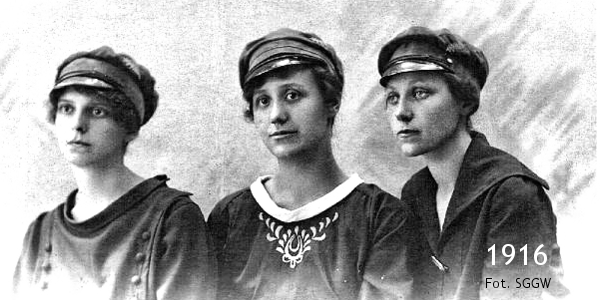
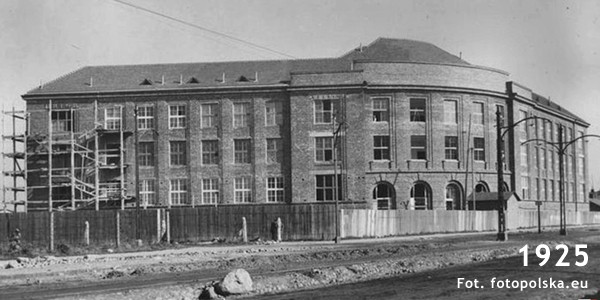
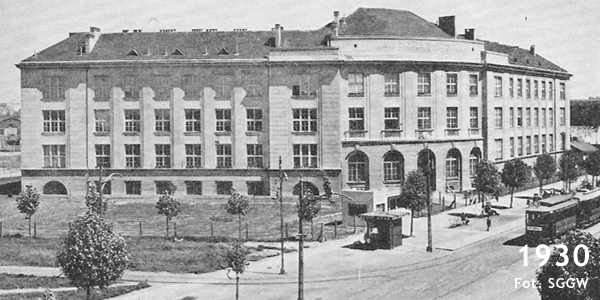
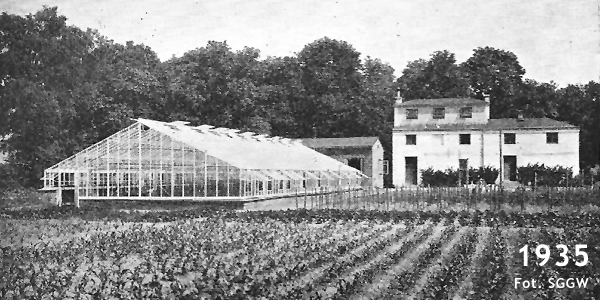
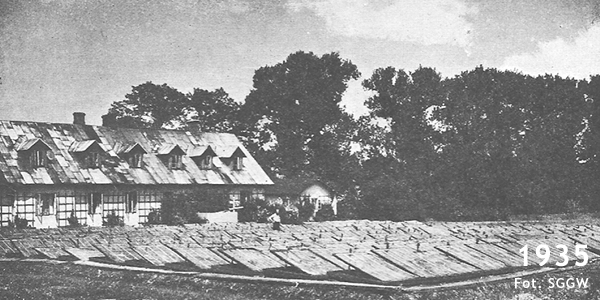
A meeting of the Council of the Faculty of Horticulture was held in Skierniewice on 12 March 1945, at which decisions were taken to reconstitute it. The ceremonial inauguration of the academic year took place in Warsaw on 15 May 1945. In the academic year 1945/46 work at the Faculty began in 12 Departments (the names of their heads are given in brackets):
- Landscape Architecture and Park Studies (Prof. F. Krzywda-Polkowski);
- Phytopathology (Prof. J. Kochman);
- Plant Physiology (Prof. M. Korczewski);
- Genetics and Plant Breeding (Prof. E. Malinowski);
- Soil Science (Prof. A. Musierowicz);
- Floriculture and Urban Horticulture (doc. St. Wóycicki);
- Mechanisation and Agricultural Engineering (Prof. Cz. Kanafojski);
- Beekeeping (under the supervision of the Rector Prof. F. Staff);
- Orchard Management (from May 1946 – after his return from the USA – Prof. Sz. A. Pieniążek);
- Mathematical Statistics (Acting Head, Eng. W. Pytkowski);
- Cultivation and Breeding of Vegetables (Prof. E. Chroboczek);
- Cultivation and Fertilisation of Agriculture (Prof. F. Majewski).
The pre-war departments were not reactivated: Department of Geography and Ecology of Crops (doc. Aniela Kozłowska resigned from the SGGW) and Department (Laboratory) of Tree Science (Prof. R. Kobendza took over as Deputy Professor at the Faculty of Forestry). In the 1950s and 60. There have been repeated changes to the structure of the Faculty, names of units and study programmes. New institutes, chairs and plants were created, some of them were transferred to other SGGW faculties, while others were transferred to the Faculty of Horticulture. On 1 September 1951, a decree of the Minister of Higher Education and Science (Journal of Laws of the People’s Republic of Poland 61/51) came into force, introducing many changes in the structure of SGGW that were disadvantageous to the Faculty of Horticulture. The name ‘Chair’ appeared in addition to the previously used name ‘Department’. The Department of Plant Protection (created from the transformation of the Department of Phytopathology, returned to the Faculty of Horticulture after a year) and the Department of Crop Cultivation and Fertilisation (also returned to the Faculty of Horticulture after a year, as a Department operating within the Department of Vegetable Cultivation) were transferred to the Faculty of Agriculture. Irretrievably, the Faculty lost the Chairs of: Plant Physiology, Soil Science, Food Technology and Mathematical Statistics, which went to other faculties of the SGGW. The Faculty had to hand over its experimental and didactic base (Pomological Garden, part of the Experimental Field) as well as large fruit farms in Dąbrowice, Nowa Wieś and Sinołęka, taken over by SGGW in 1945-1948 as part of the land reform, to the Institute of Pomology being established in Skierniewice. In 1950, The Department of Landscape Architecture and Landscape Design was transformed into the Department of Landscape Design and Decoration, with Prof. Alfons Zielonko as its head. In 1952 a specialisation in landscaping was established at the Faculty in the last three semesters of the engineering course. In 1954, the Section of Landscaping of Green Areas (SKTZ) was established in the Faculty (Official Gazette of the Ministry of Higher Education and Science 13/54). In 1955, the Department of Landscaping and Maintenance of Green Areas and the Department of Design of Green Areas (M.Sc. Władysław Niemiec (Niemirski)) were established there. In September 1956 the authorities handed over to SGGW the land and buildings of the former Centre for the Training of Agricultural Personnel in the Ursynów area (Decree No. 327 of the Prime Minister of 17.11.1956), and in 1957 the University took over the key of the so-called Wilanów estates (Wilanów, Wolica, Natolin, Moczydło, Powsin, Ursynów and Obory), which were used as an experimental and teaching base, among others, for the Faculty of Horticulture. Already that year, some of the Faculty’s departments moved to Ursynów. In 1958, the Department of Soil Cultivation and Fertilisation headed by Professor Franciszek Majewski returned to the Faculty. In 1962, doc. Jan Boczek took over as head of the Department of Applied Entomology. Shortly thereafter, the Department of Plant Protection was divided into two: Department of Phytopathology and Department of Applied Entomology. A year later, the Department of Vegetable Science was moved from Skierniewice to Ursynów, after the establishment of the Vegetable Science Department in Skierniewice into the Vegetable Science Institute. In 1970 the state authorities carried out a large-scale reorganisation of the university. Departments were abolished and merged into larger units – institutes. Three such units were established at the Faculty of Horticulture. The Institute of Horticultural Production was made up of the existing Faculties of Ornamental Plants, Orcharding, Vegetable Production, Crop Production and Fertilisation, and Medicinal and Special Plants. Professor Aleksander Rejman, who was later replaced by Professor Henryk Chmiel, became Director of the Institute. The Departments of Phytopathology and Applied Entomology were merged to form the Institute of Plant Protection, headed by prof. Jan Boczek. A few years later, the Institute of Plant Protection was excluded from the Faculty and acquired the status of an interdepartmental institute. The two departments forming the SKTZ were merged into the Institute of Landscaping and Nature Conservation (IKTZiOP). Its director was Prof. Alfons Zielonko, and after his retirement, Prof. Władysław Niemirski, and then Associate Professor Edward Bartman. In 1973, IKTZiOP was split into two institutes: Landscaping (Director Prof. A. Zielonko) and Environmental Protection (Director Associate Professor H. Zimny). The Department of Genetics was merged with an analogous department of the Faculty of Agriculture to form the Interdepartmental Institute of Genetics and Plant Breeding (IGiHR). The director of this unit was Prof. Stanisław Starzycki, who was soon followed by Prof. Władysław Byszewski and then by Prof. Bogusław Kubicki. In 1972 the Faculty Council set up research teams in all three Institutes, whose names corresponded to those of the former Departments, with the former heads of these Departments as their heads. Only in the IKTZiOP did a new team appear – the Ecology and Environmental Protection Team headed by Associate Professor Henryk Zimny. In 1971, the first steps were taken to build a large greenhouse complex and a new building for the Department (the present Building 35). The new greenhouses were put into use in 1981. In March 1974, the Library of the Faculty of Horticulture was opened. In 1975, on the initiative of Prof. A. Reyman, an experimental field for research on the cultivation of highbush blueberry in Poland was established in Błonie near Prażmów (supervisor: Dr Kazimierz Pliszka). In 1976 The Experimental Field of the Faculty in Wilanów, headed by Dr Bolesław Czarnecki, was established. In 1976, the Department of Phytopathology (Prof. Z. Borecki) and the Department of Applied Entomology (Prof. J. Boczek) were established at the Institute of Plant Protection, while 3 Departments, including the Department of Genetics and Breeding of Horticultural Plants (Prof. B. Kubicki), were created at the IGiHR. In the following years, the Department of Organisation and Economics of Horticulture (Prof. N. Krusze) was transferred from the Faculty of Economics and Agriculture to the Faculty of Horticulture, the Institutes of Landscaping and Environmental Protection were merged, and the Institute of Plant Protection was transformed into an interdepartmental unit. Under the Higher Education Act 1982, the institutes were dissolved, reverting to chairs as the basic organisational units of the faculties. The organisational structure of the Faculty of Horticulture established at that time has been preserved with minor changes to the present day. Chairs were established at that time (the names of their heads are given in brackets):
- Applied Entomology (Prof. J. Boczek);
- Phytopathology (Prof. Z. Borecki);
- Genetics and Breeding of Horticultural Plants (Prof. B. Kubicki);
- Environmental Protection (Prof. H. Zimny);
- Organisation and Economics of Horticulture (Prof. N. Krusze);
- Design in Landscape Architecture (Prof. W. Niemirski, followed by Prof. E. Bartman);
- Ornamental Plants (Prof. H. Chmiel) with the Department of Dendrology and the Department of Ornamental Plants;
- Orchard Management (Prof. A. Rejman);
- Cultivation and Fertilisation of Horticultural Crops (Prof. J. R. Starck);
- Landscaping and Landscape Management (Prof. T. Szczęsny, followed by Prof. L. Majdecki);
- Vegetables and Medicinal Plants (Prof. H. Skąpski) with the Department of Medicinal and Speciality Plants and the Department of Vegetables.
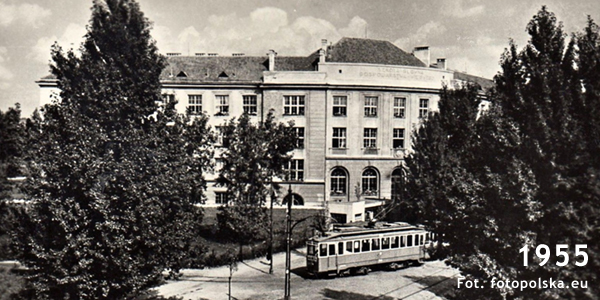
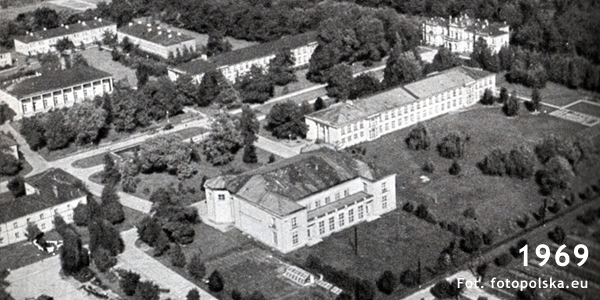
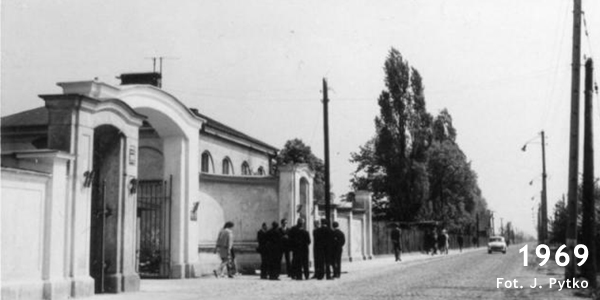
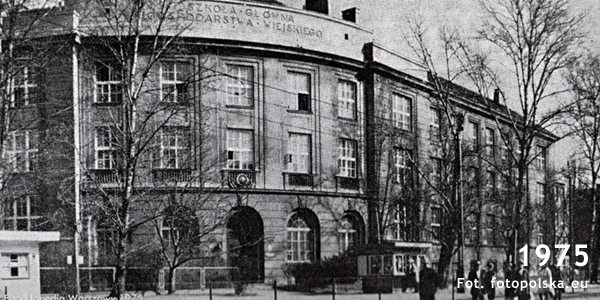
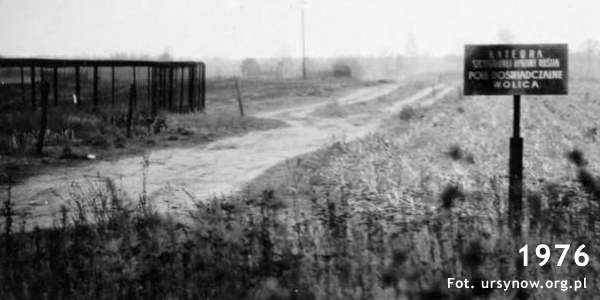
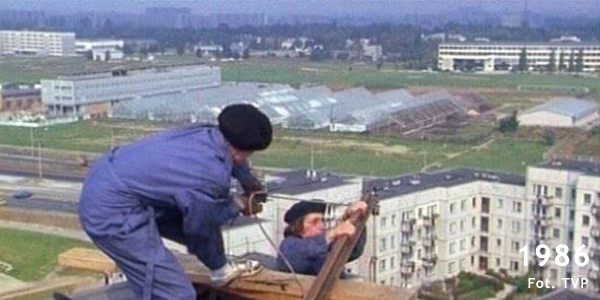
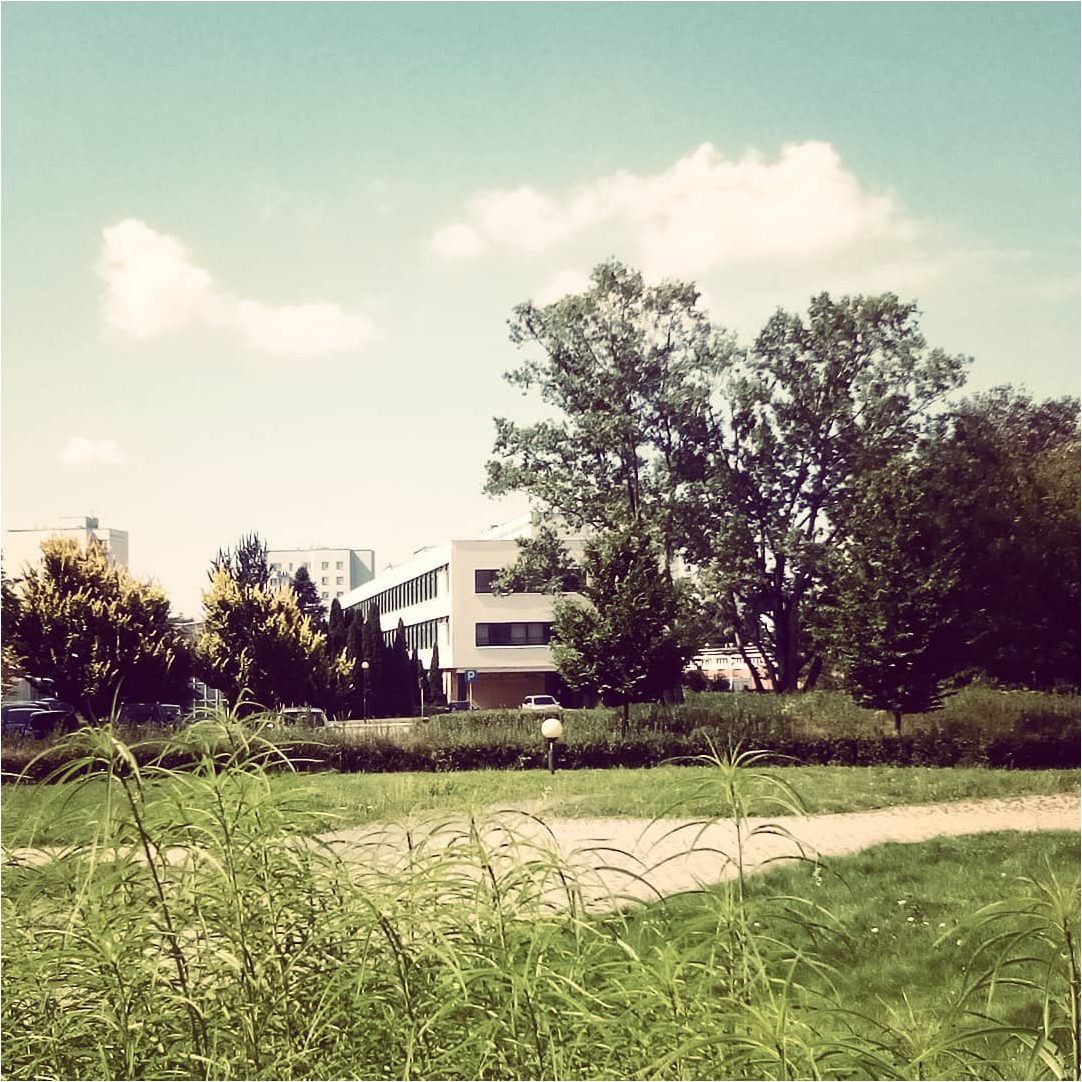
In the 1980s and 90. There were further changes in the structure of the Faculty. Among others, the following were established: the Laboratory of Herbology (docent S Gawroński), the Independent Department of Dendrology (docent W. Seneta, later dr J. Dolatowski), the Independent Department of Anti-cancer Plants (docent A. Sadowska). In 1981, the Greenhouse Experimental Centre was put into use. In 1985 the Landscape Architecture Department (OAK) was established in place of the SKTZ, with 3 units: The Department of Design in Landscape Architecture (Dr A. Niemirski), the Department of Landscape Management and Nurturing (Prof L. Majdecki) and the Department of Environmental Protection (Prof H. Zimny). In 1990, the Independent Department of Dendrology was separated from the Department of Ornamental Plants (Prof. M. Siewniak). In the following years the organisational structure of OAK was changed. The Faculties of Design in Landscape Architecture and Landscape Management and Care were merged in 1998 into the Department of Landscape Architecture (Dr P. Wolski), and the Department of Dendrology was incorporated into the Department of Environmental Protection in 1999. In 1989, two Departments were established in the Department of Vegetable Science – Field Vegetable Science (Prof. H. Skąpski) and Greenhouse Vegetable Science (Doc. W. Gosiewski). The new Faculty building was opened on 14 November 1992. It housed the dean’s office, several departments and the Department of Horticultural Practice and Propagation. A laboratory and teaching building and an automated greenhouse were constructed in Wolica, providing a teaching and research base for the Department of Horticultural Genetics and Plant Breeding. In 1995, the Independent Department of Medicinal Plants was separated from the Department of Vegetables and Medicinal Plants (Dr Zenon Węglarz) and renamed the Department of Vegetables. The Department of Horticultural Crop Cultivation and Fertilisation and the Herbology Laboratory were replaced by the Department of Natural Horticultural Basics. The Department of Horticultural Practice and Dissemination was transformed into the Department of Practical Training. The name of the Department of Horticultural Genetics and Plant Breeding was changed to the Department of Plant Genetics, Breeding and Biotechnology (Prof. Katarzyna Niemirowicz-Szczytt). In 2000, the OAK organisational units were incorporated into the Faculty, which changed its name to the Faculty of Horticulture and Landscape Architecture (WOiAK). In 2005, the current structure of units representing landscape architecture was formed, comprising: The Department of Landscape Architecture, the Department of Environmental Protection, the Department of Landscape Art and the Laboratory for the Assessment and Valuation of Natural Resources. In 2001 A modern storage facility was built at the Wilanów Experimental Field. In 2003, Building No. 37 was put into operation, equipped with modern research and teaching facilities, in which the Department received at its disposal approx. 9,000 m 2 . Most of the faculty units have found new premises. In 2004 new greenhouses were put into operation as the Greenhouse Experimental Centre. In 2012, studies in Biotechnology, previously conducted by the Interdepartmental Study of Biotechnology, were incorporated into the Faculty programme. The name of the Faculty was changed on 1 January 2013 (SGGW Academic Senate Resolution No. 34/2012/2013) to the Faculty of Horticulture, Biotechnology and Landscape Architecture. The Faculty has been running a degree programme in Plant Health Protection since 2015/16.
Compiled by Prof. DSc. S Kryczynski, Dr Eng M J Latkowska
.

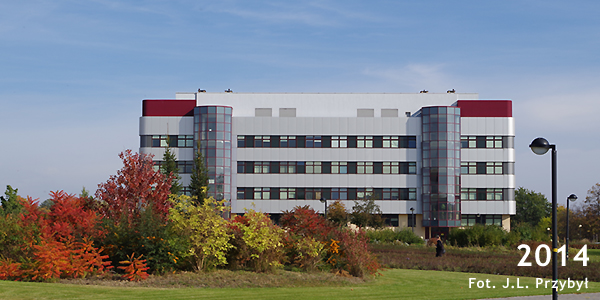
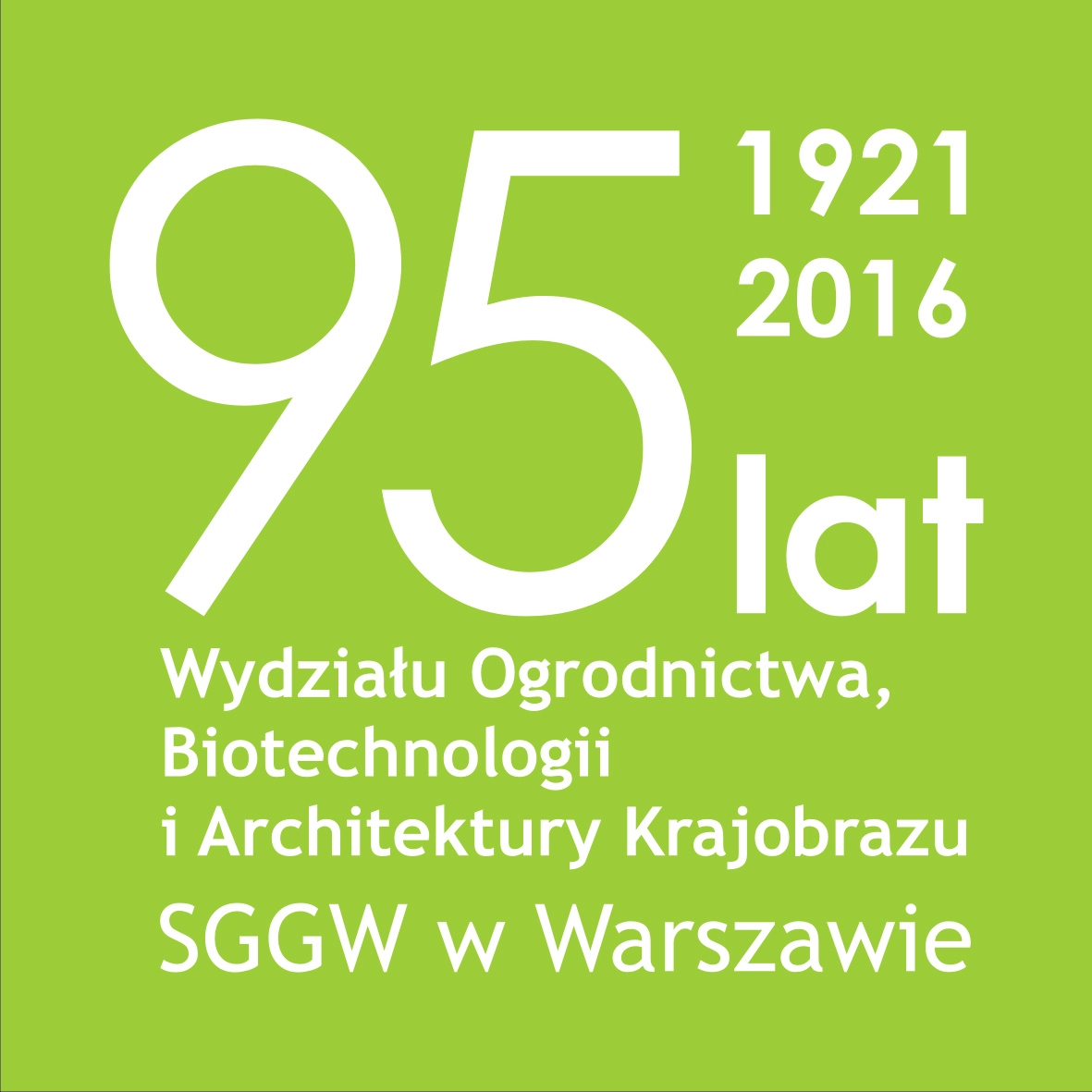
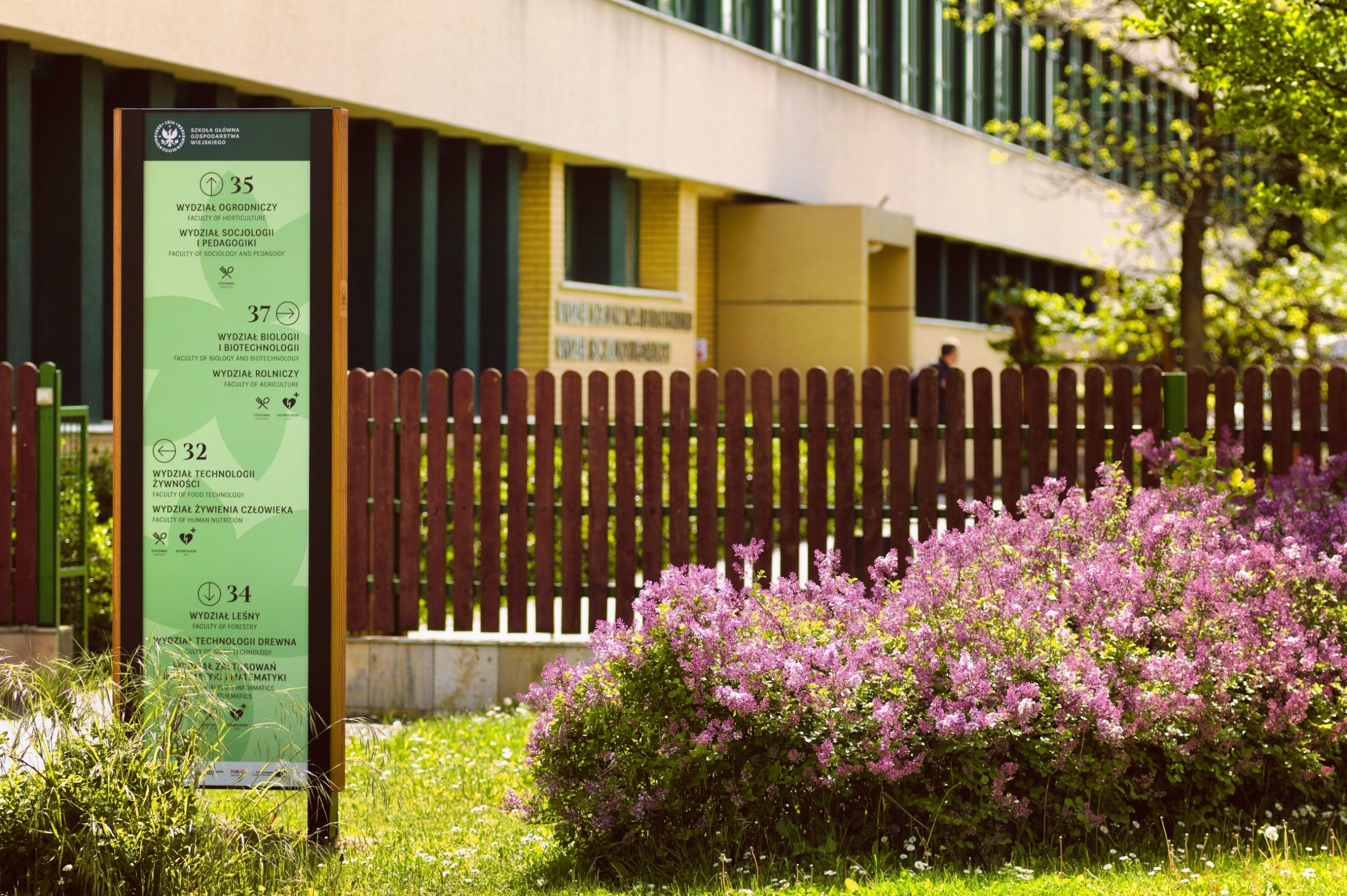
Building 35
2019
- On the basis of the Act of 20 July 2018. Law on Higher Education and Science, also known as Law 2.0, as well as the Statute of the Warsaw University of Life Sciences, a teaching unit, the Faculty of Horticulture and Biotechnology, with Dr Marzena Wińska-Krysiak as Dean and the Institute of Horticultural Sciences, has been established as of 1 October 2019. At the Faculty, teaching is carried out in the faculties of: Horticulture, Biotechnology, Plant Health Protection and Landscape Architecture. The teaching process involves the staff of the Institutes: Horticultural Sciences, Biology, Food Science, Veterinary Medicine, Forestry Sciences, Sociological Sciences and Pedagogy, as well as university-wide units: Study of Physical Education and Sport and Study of Practical Foreign Language Teaching.
.
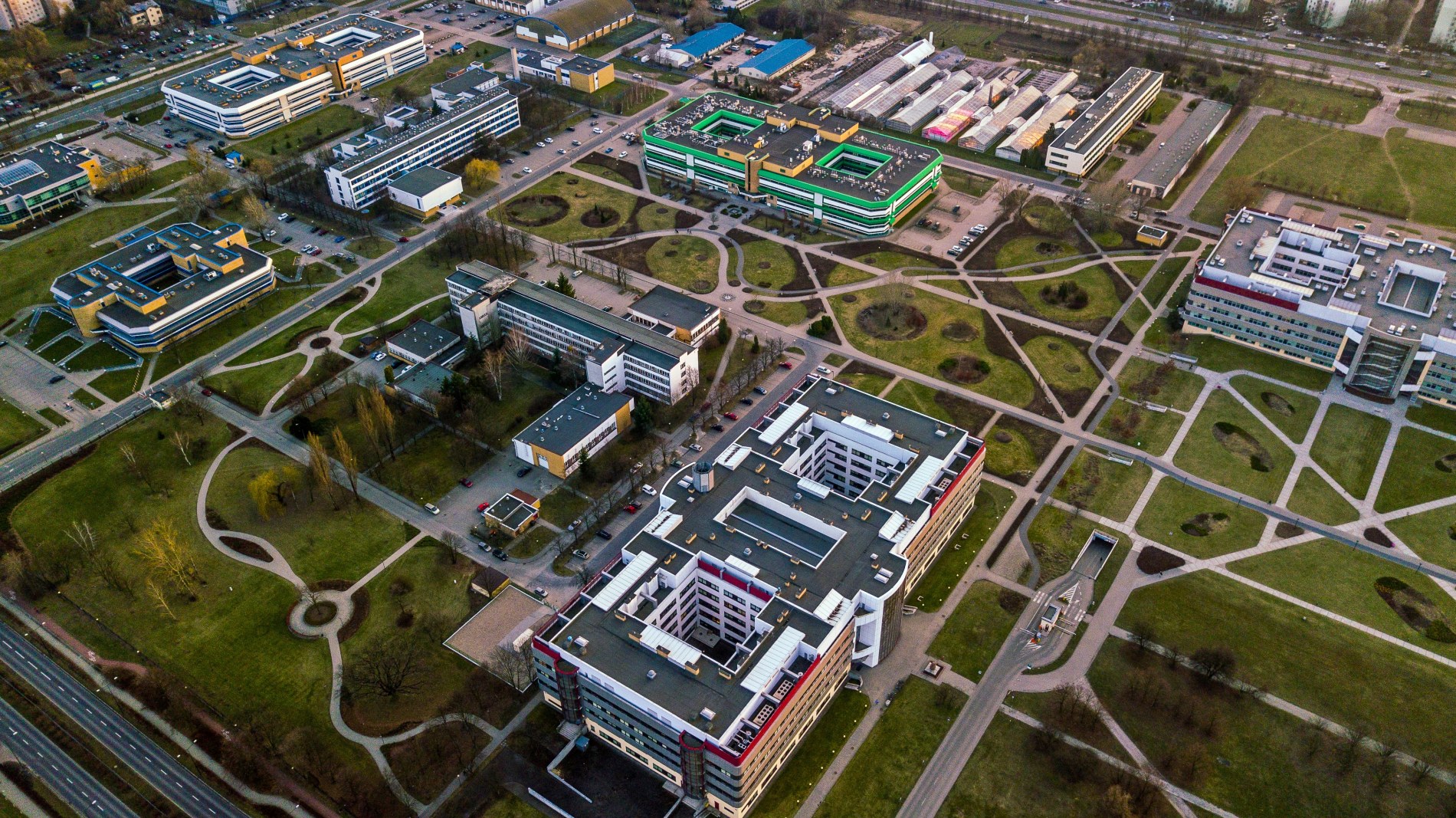
SGGW Campus
2021
- From 1 October 2021, the name of the Faculty of Horticulture will apply.
- The course was launched Ogrodnictwo miejskie i arborystyka.
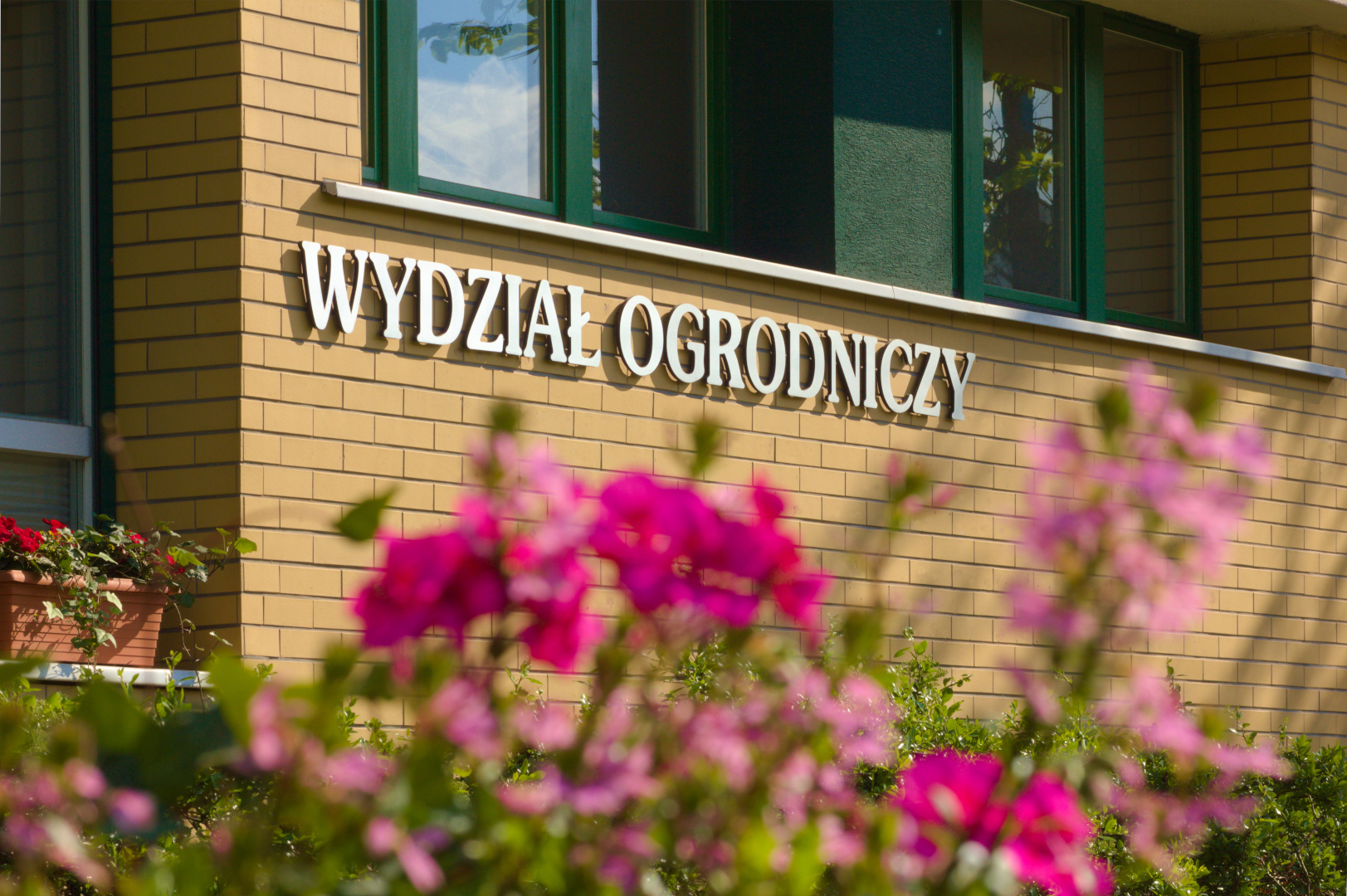
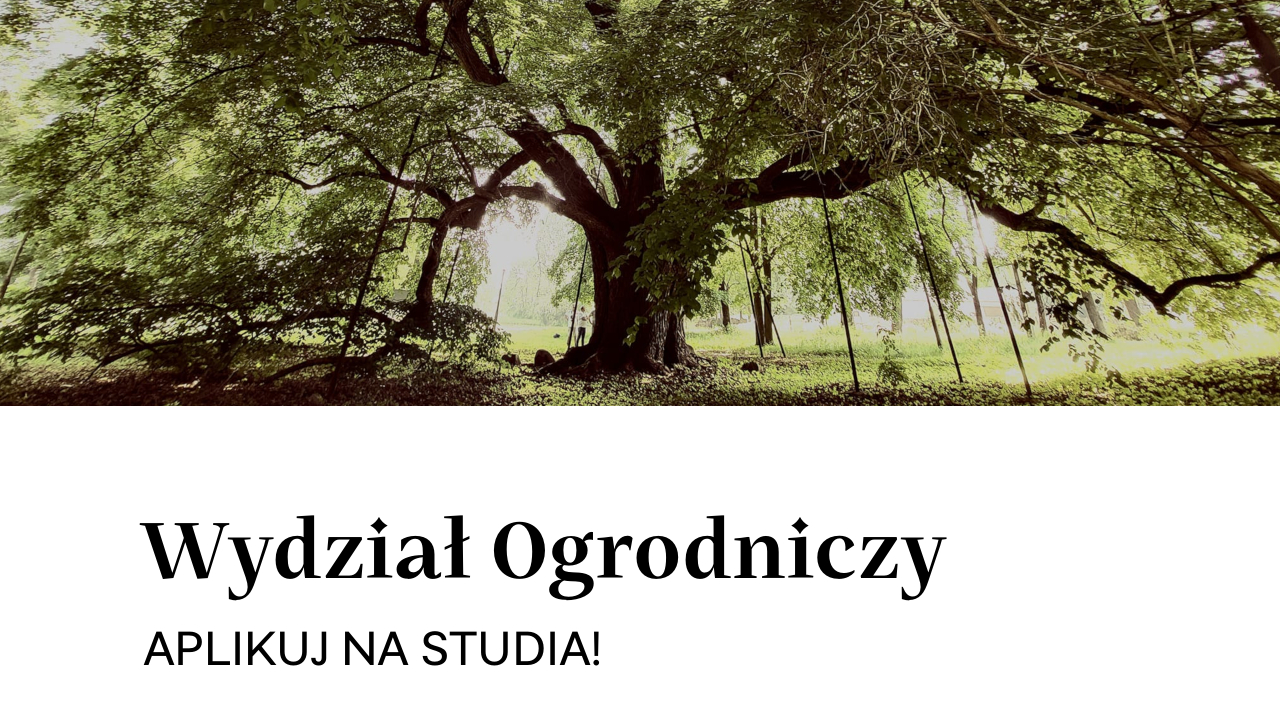
2022
- Horticulture in SGGW best in the ranking of courses Perspektywy 2022.
- On 15 December 2022, in the Erazm Majewski Hall at the Staszic Palace in Warsaw, a ceremony was held to present awards and distinctions of the Division II of Biological and Agricultural Sciences of the Polish Academy of Sciences for 2022. By Resolution No. 1/2022 of the Presidium of the Chapter of the Michal Oczapowski Medal of 25 August 2022, the Faculty of Horticulture of the Warsaw University of Life Sciences was awarded the Michal Oczapowski Medal.
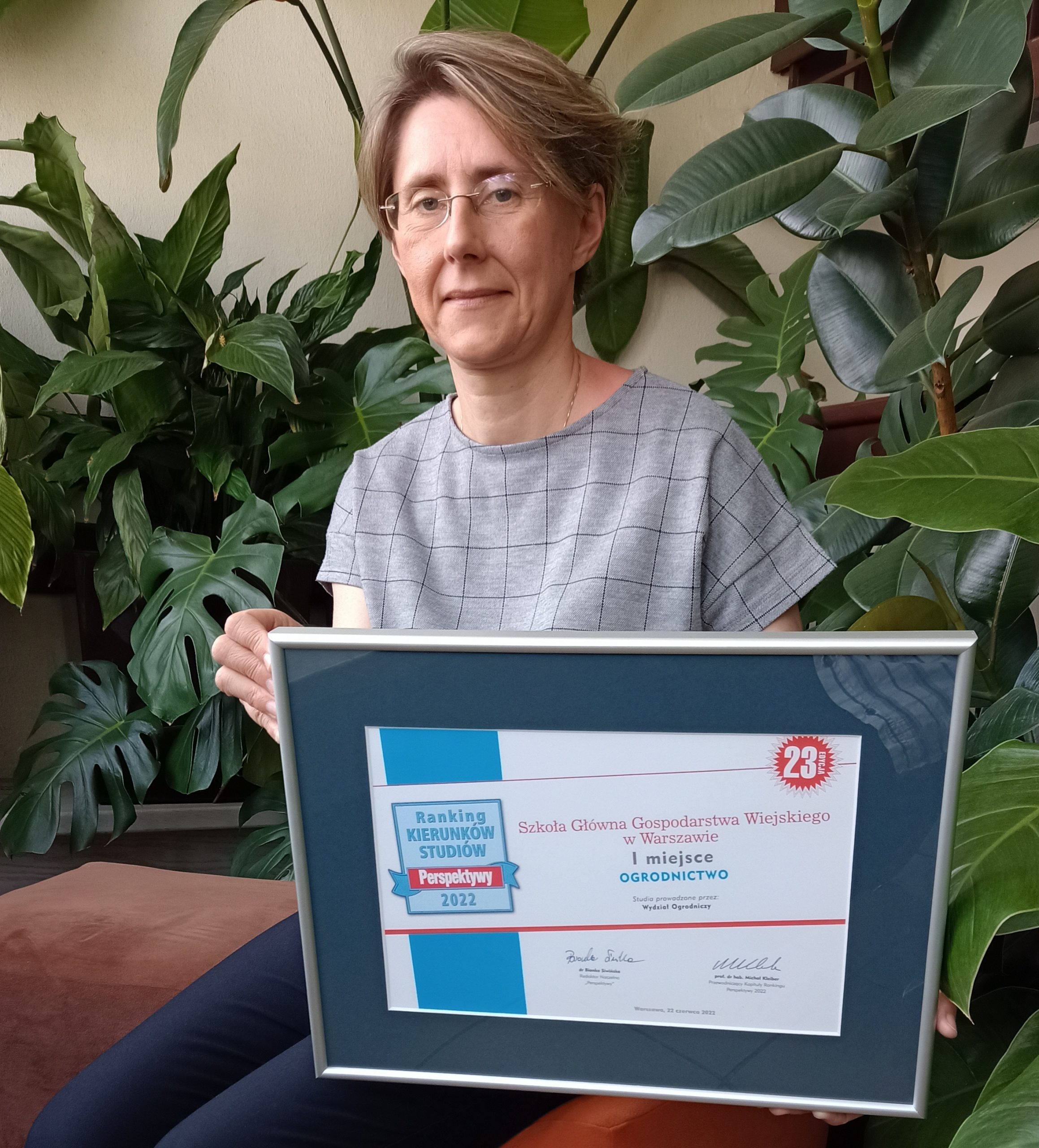
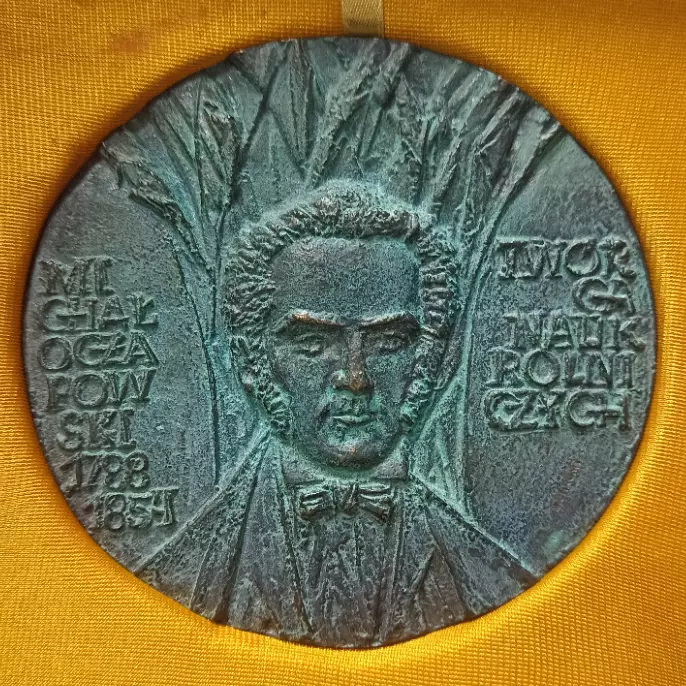
Michal Oczapowski Medal for the Faculty of Horticulture
2023
- The course was launched Sustainable Horticulture.
- Ogrodnictwo w SGGW najlepsze w rankingu kierunków studiów Perspektywy 2023.
.
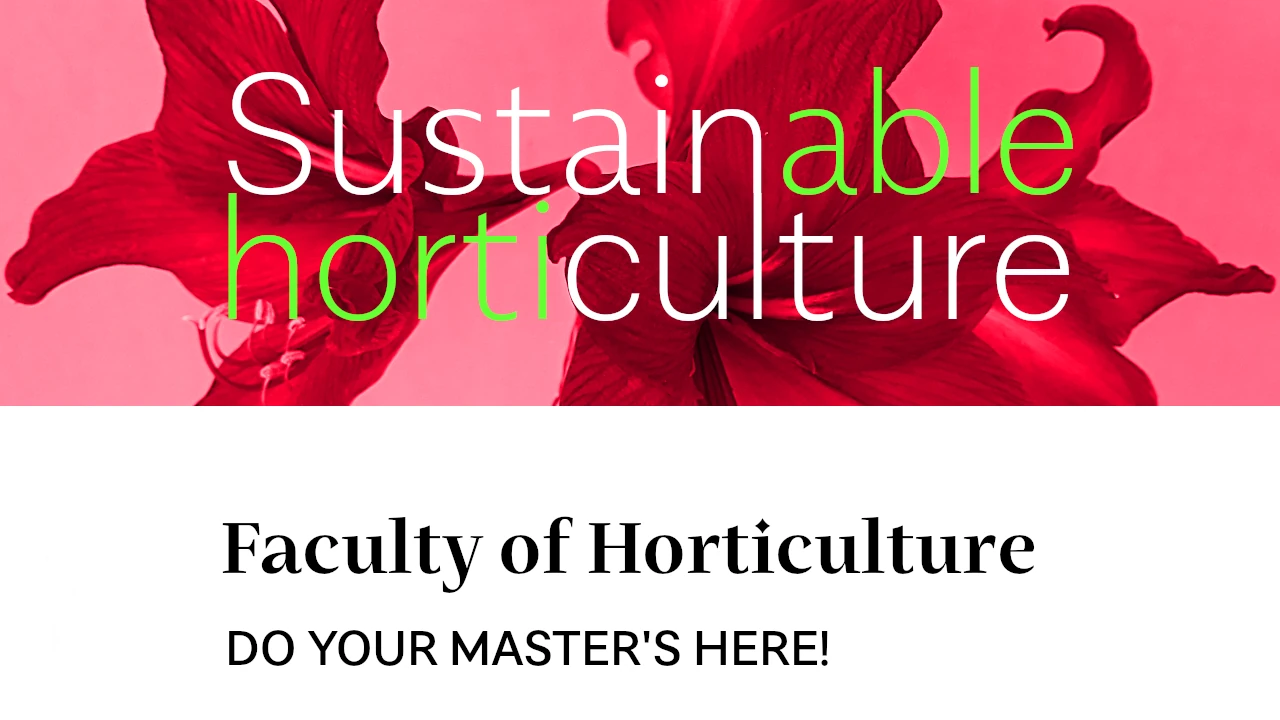

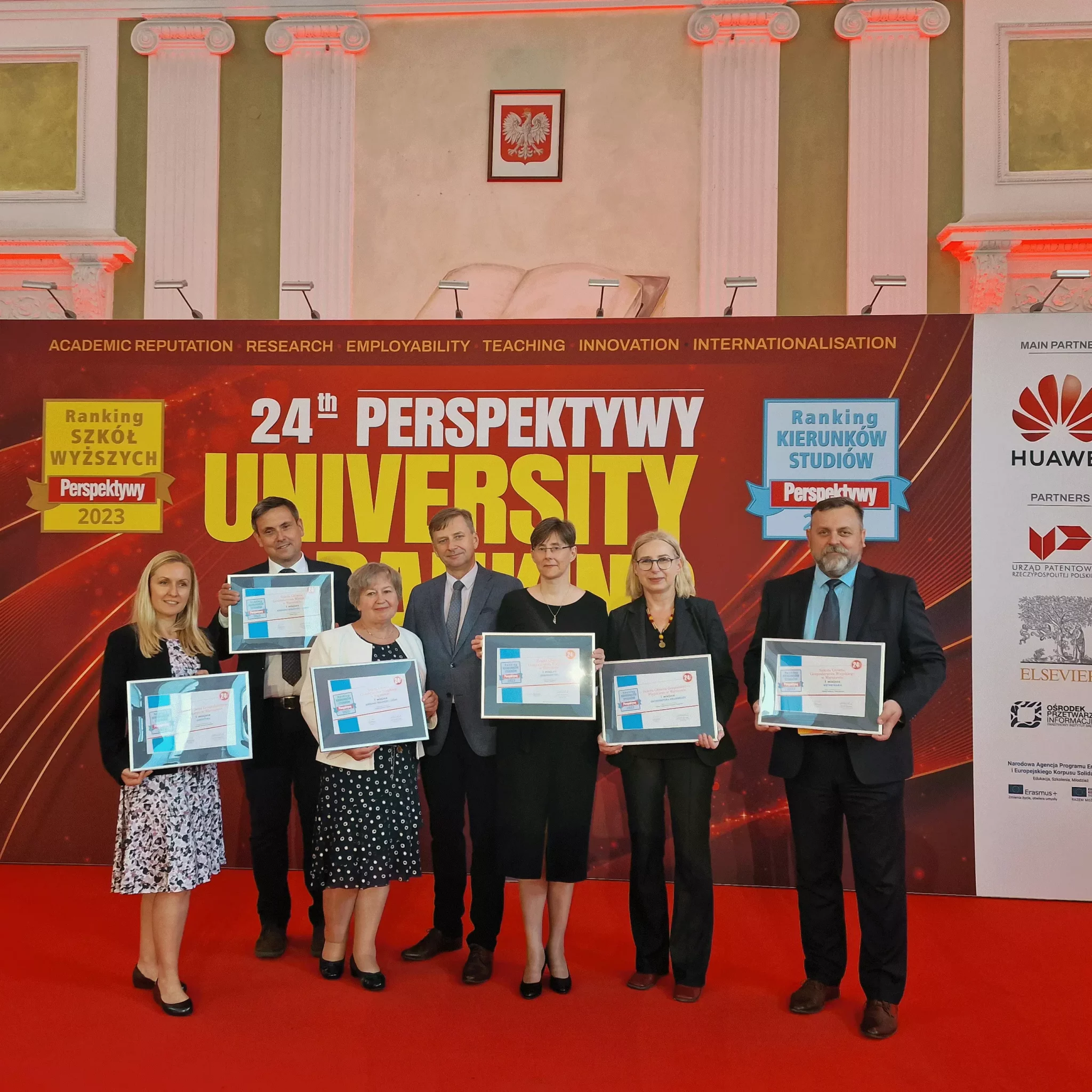
2024
- Horticulture in SGGW the best in the ranking of courses Perspektywy 2024.
.


2025
- Horticulture in SGGW the best in the ranking of courses Perspektywy 2025.
.


